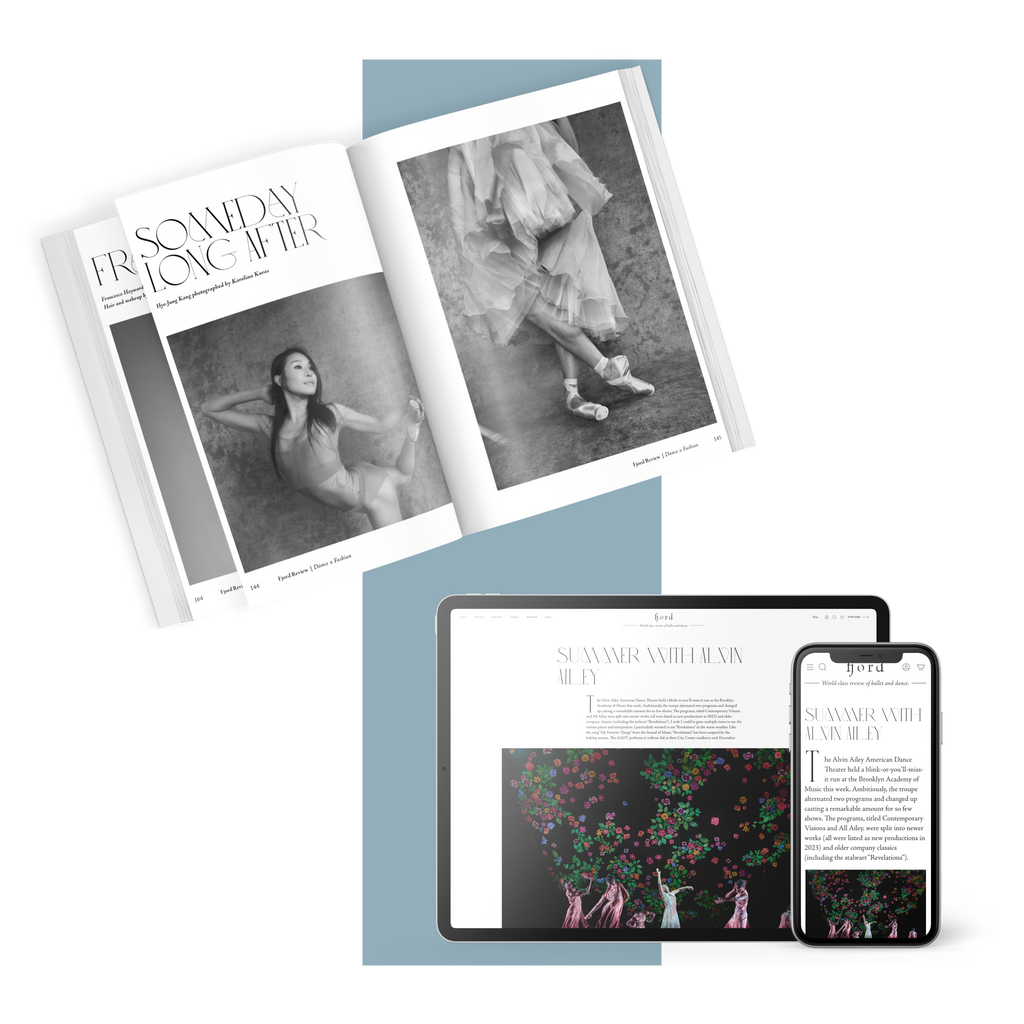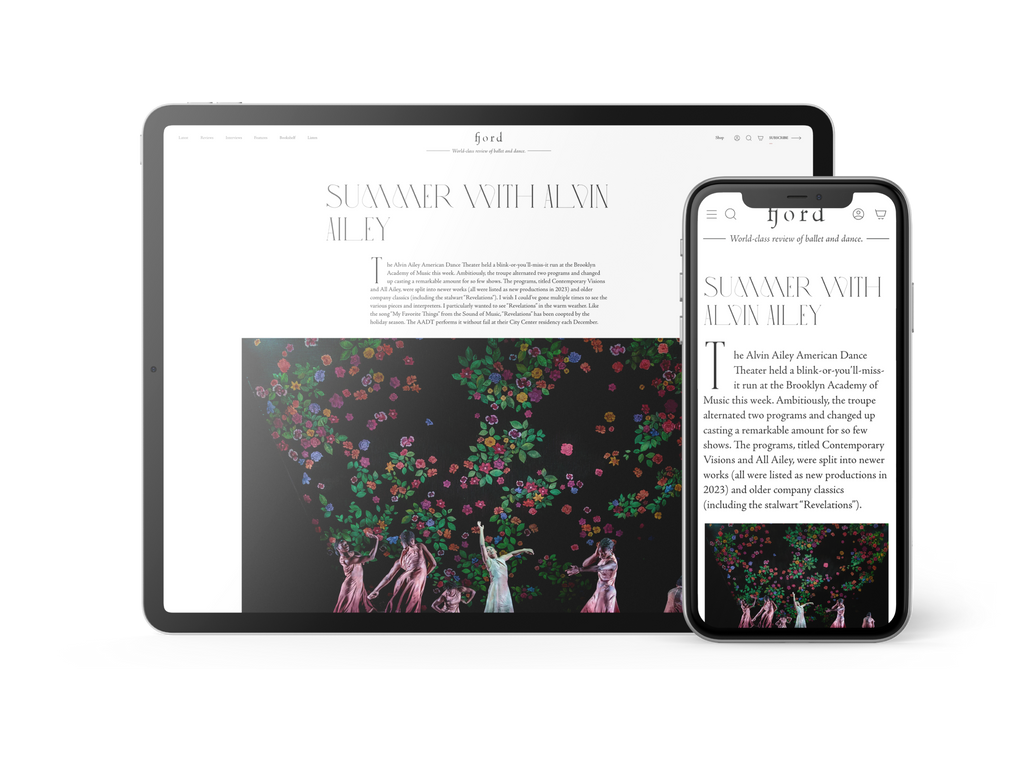Lycra and Lace
What is he looking at? The dancer in a blue biketard bounds around the stage, his curly hair flip-flopping as his head snaps right, left, and center.
Continue Reading
World-class review of ballet and dance.
Light and dark, day and night, youth and maturity, a flirtation and redemption, naturalistic and ethereal: “Giselle” spins a conjuror’s trick all the wilier for its very familiarity, its everlasting allurement. An autumnal village presented in Act I flips to reveal the ballet blanc of Act II: two halves of a whole. We know this, we anticipate this, we lap it up. Fermented in honey before interval, raising a flagon of mead to love, and even love’s folly, and unpinned madness, we heed the warnings spun to the villagers. The flipside to a light-hearted Peasant pas de deux is heartache and mourning. We are cognisant of the fact that when we return to our seats in the theatre, the scene will have changed. Light for dark. Day for night. Of the earth for beyond this realm. A village for the darkest forest floor of folkloric apparitions who demand you dance to your death. Raise your flagon of mead for raise your ghostly spirits, cloaked in a shawl spun by otherworldly spiders.

Ako Kondo and Ty King-Wall in the Australian Ballet's “Giselle.” Photograph by Jeff Busby


“Uncommonly intelligent, substantial coverage.”
Your weekly source for world-class dance reviews, interviews, articles, and more.
Already a paid subscriber? Login
What is he looking at? The dancer in a blue biketard bounds around the stage, his curly hair flip-flopping as his head snaps right, left, and center.
Continue ReadingTwo performers crawl in on hands and knees wearing neon green, hooded coveralls—the lightweight papery kind made for working in a sterile environment—and clusters of balloons pinned to their backs.
Continue ReadingWill Rawls makes boundaries visible by defying them. Known for the disciplinary and topical range of his projects, the choreographer, director, and performer approaches issues of representation in “[siccer],” a multi-part, multi-site work co-presented by L’Alliance New York’s Crossing the Line Festival. A live performance at Performance Space New York accompanies a multimedia installation at the Kitchen, a book published by Wendy’s Subway, and an album published by the artist. With a creative process reaching back to 2018, the work delves explicitly into pandemic-era energies and inertias with focused intimacy and a pervasive sense of instability.
Continue ReadingIt is always interesting when multiple theme steps emerge over the course of a mixed repertory evening, but it is uncanny on one featuring five different ballets, each with a different choreographer and composer, covering a twenty-year span (2005-2025).
Continue Reading
comments